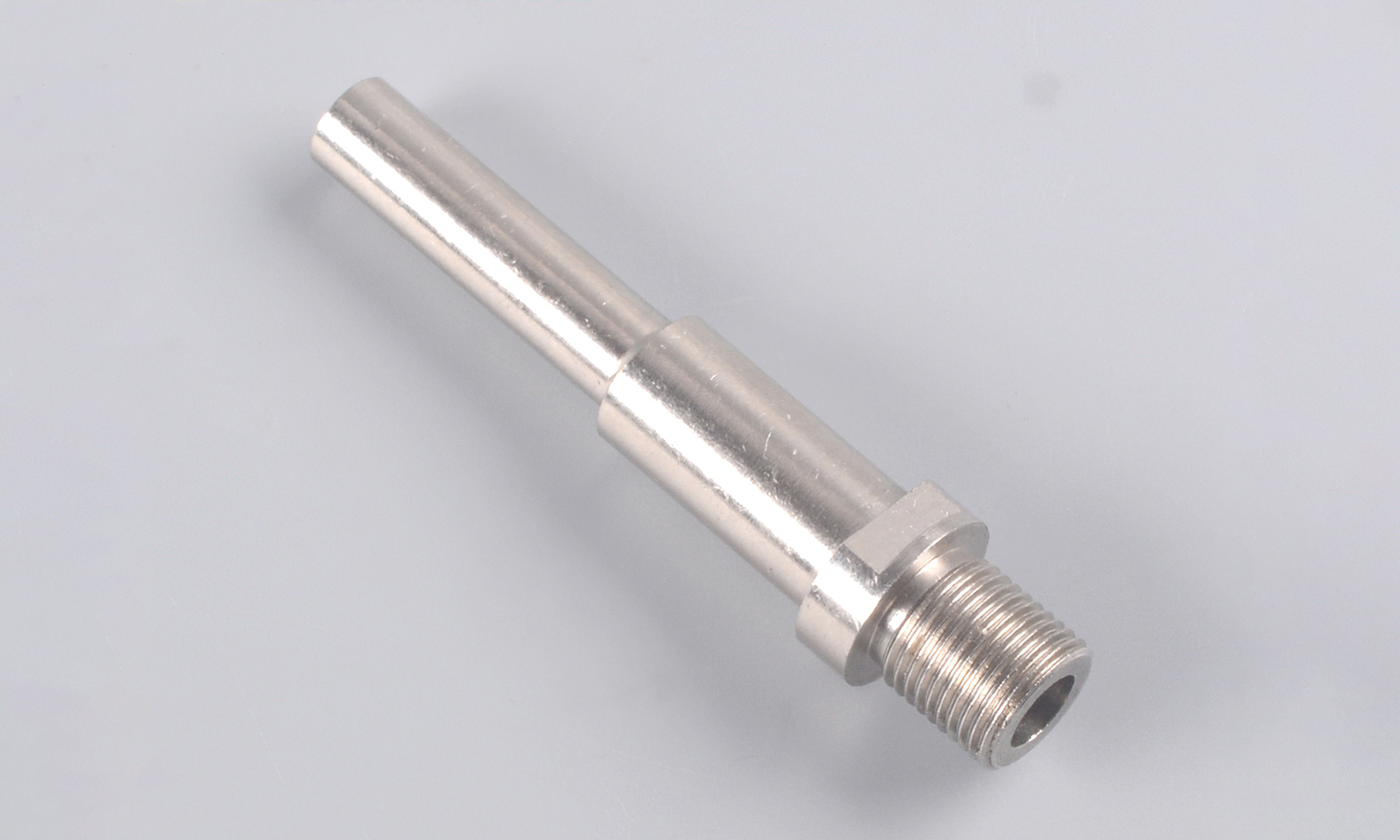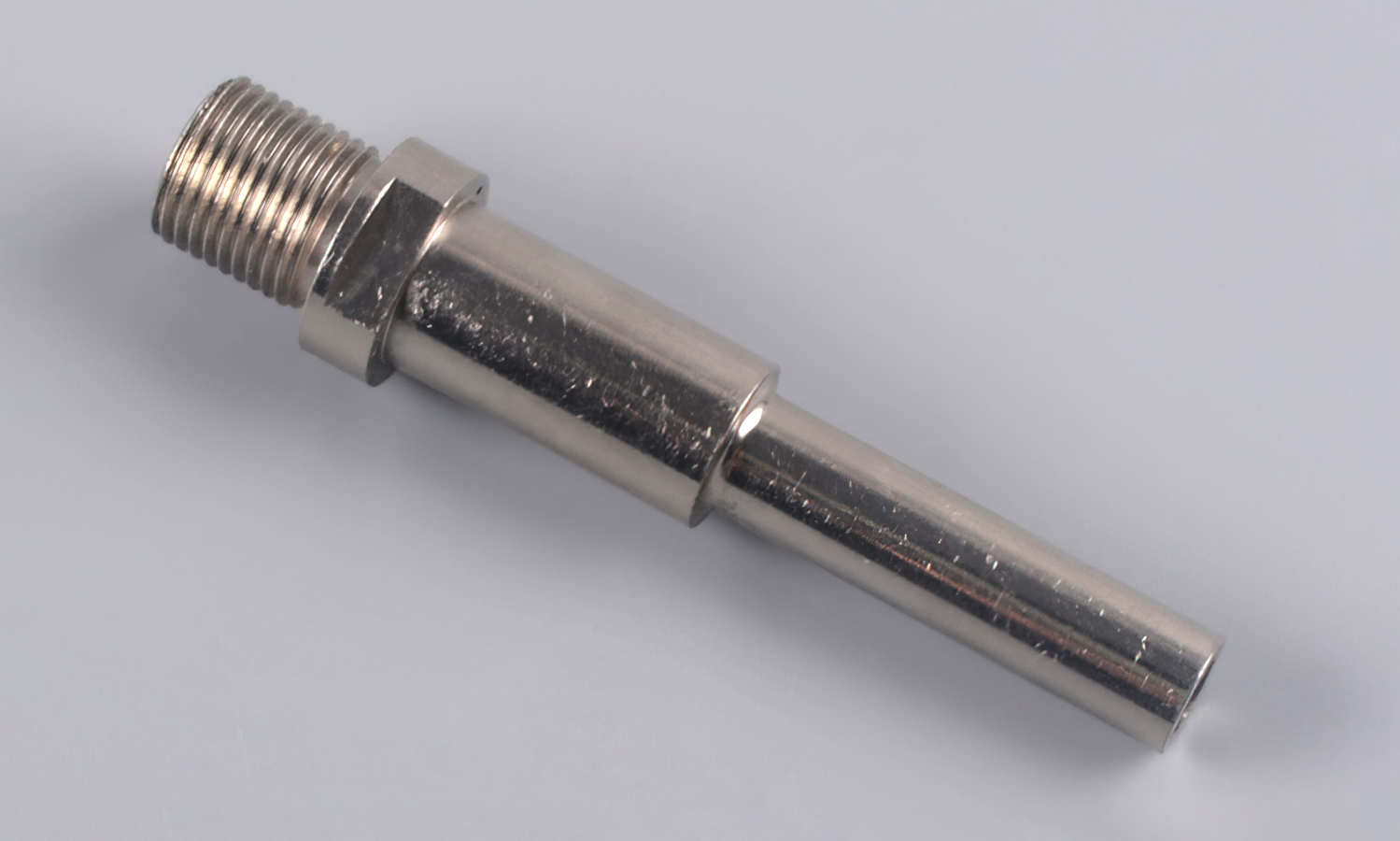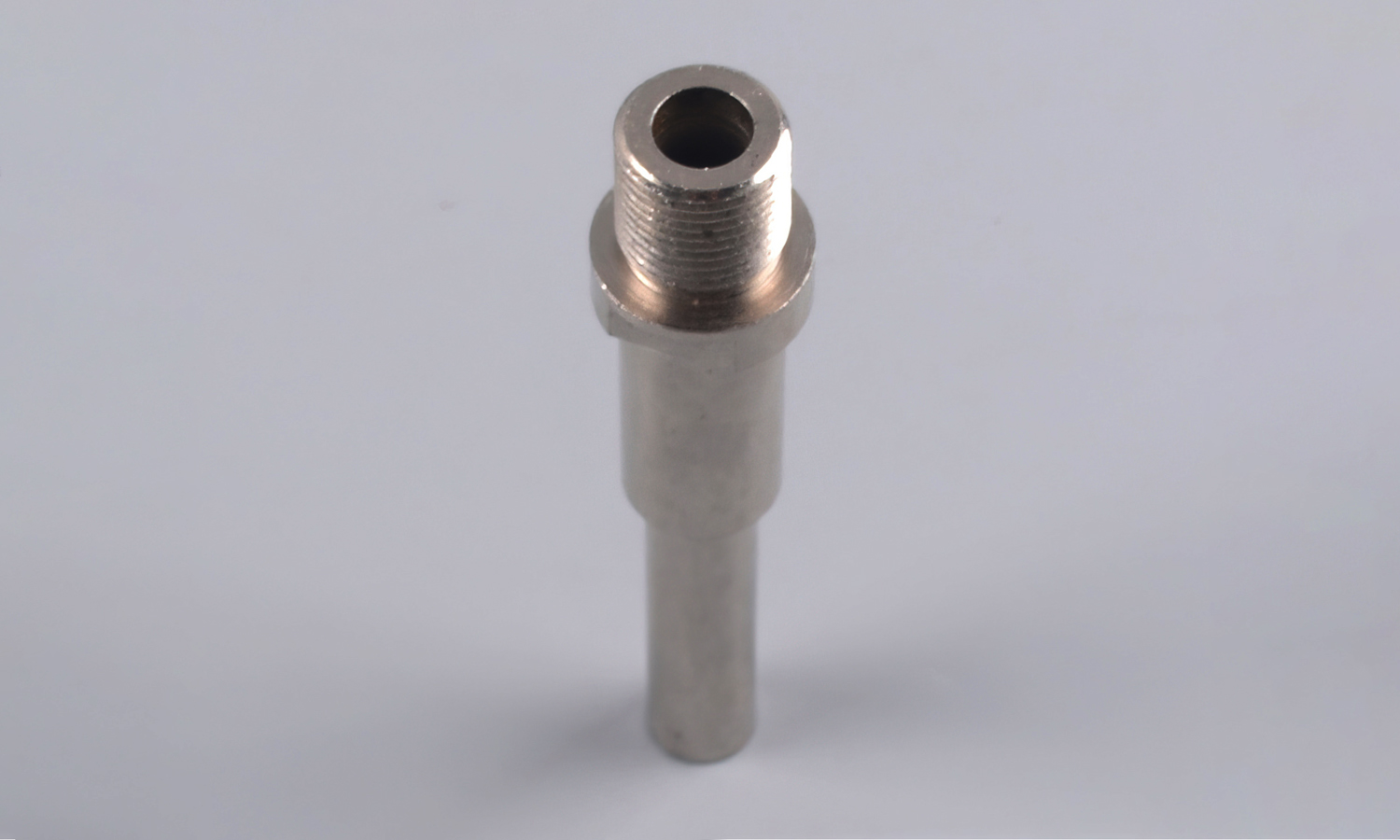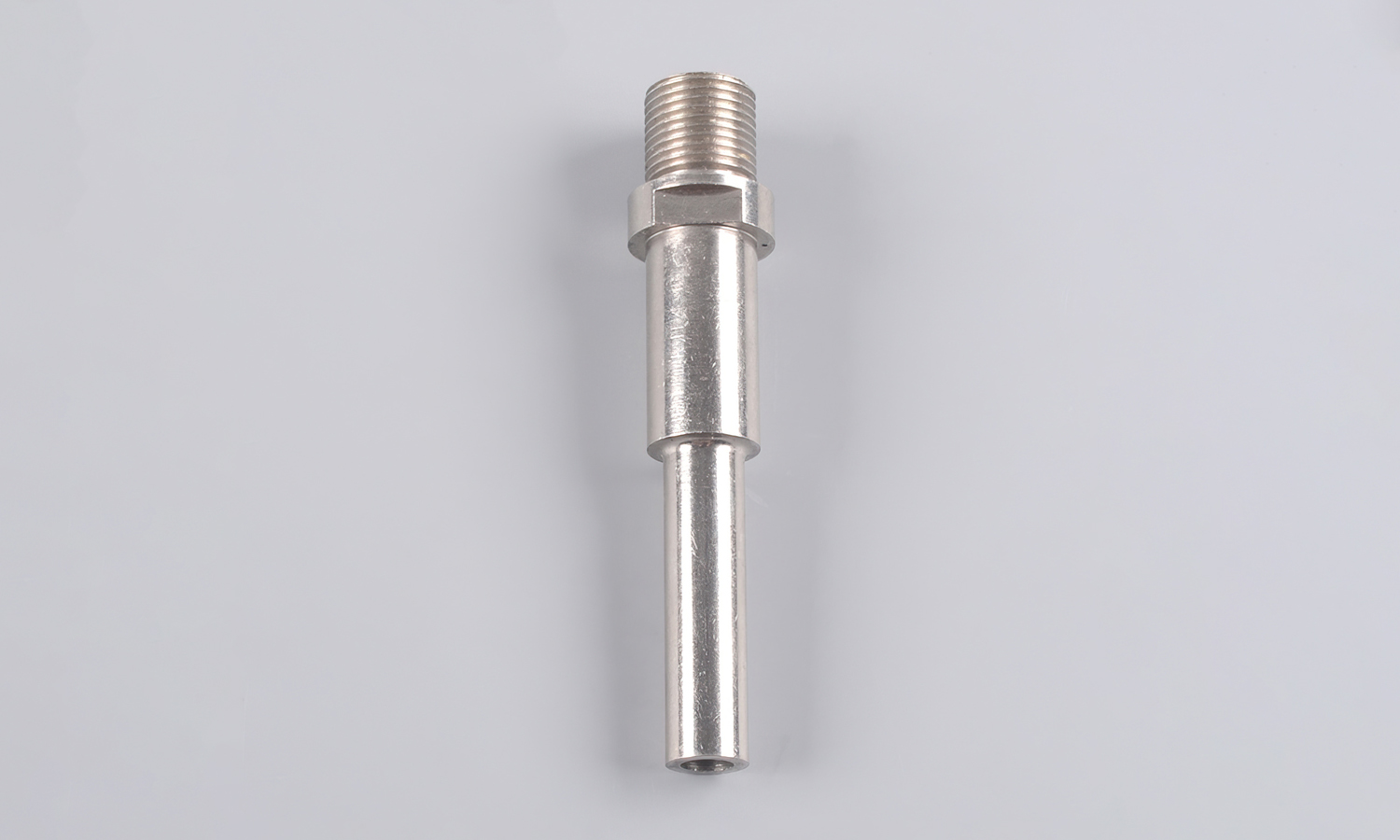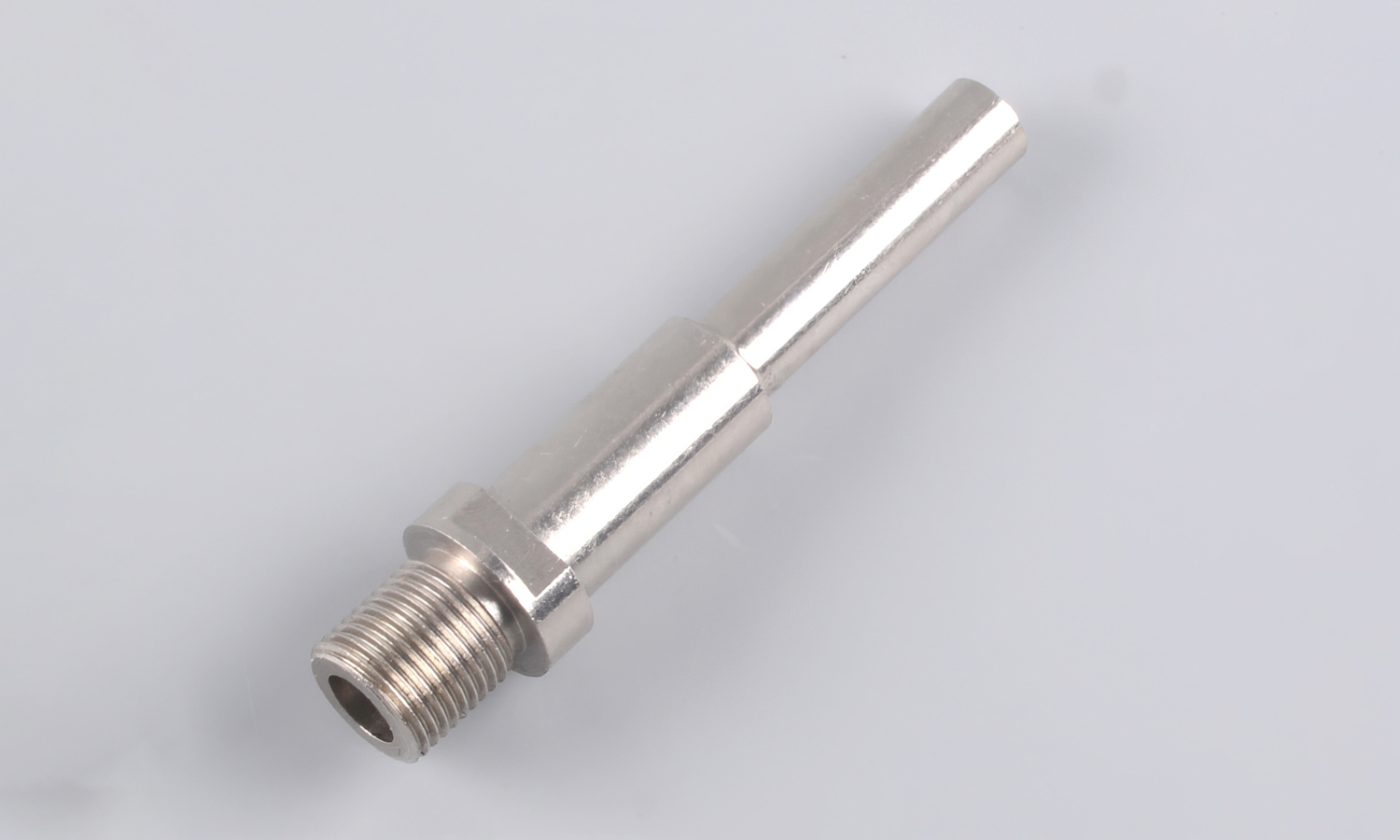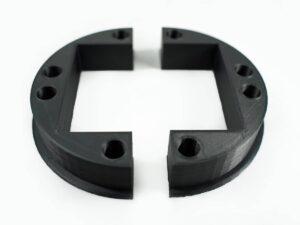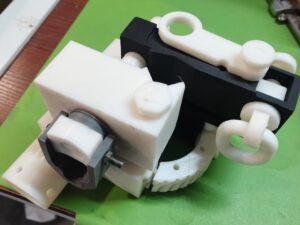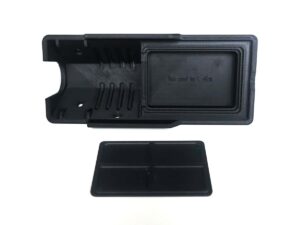- CNC Milled Aluminum Alloy Camera Control Knob
- CNC Milled SS304L Four-leaf Clover Mold with Brushed Surface
Gallery
About Project
If you are looking for a reliable and versatile tube fitting that can connect a tube to a metal enclosure, you might want to consider making a custom CNC-turned thin tube fitting with male and female threadings. This is a type of tube fitting that is custom-made by using a CNC lathe to precisely shape and cut the metal material. The result is a high-quality and accurate tube fitting that can meet your specific needs and specifications.
A CNC-turned thin tube fitting with male and female threadings has a simple but effective design that allows it to fit securely and tightly to the metal enclosure and the tube. It consists of two parts, one part has a large diameter, and the other part has a smaller diameter. The part with a large diameter has a male threaded opening on one end that is used to attach the fitting to a metal enclosure.┬Ā
The part with the smaller diameter has a female threading on the other end that is used to connect the fitting to the tube. This helps to create a tight connection with the male thread of the tube, using a washer or a gasket to prevent any leakage or loosening of the connection. The smaller diameter also serves as a stop for the tube insertion, ensuring that the tube is aligned properly with the fitting.
The advantage of using a CNC-turned thin tube fitting with male and female threadings is that it can provide a secure and leak-proof connection between the tube and the metal enclosure, without requiring any additional tools or components. The fitting can also be customized to match the exact dimensions and specifications of the tube and the metal enclosure, ensuring a perfect fit and alignment.
If you are interested in ordering CNC-turned thin tube fittings with male and female threadings, you should contact FacFox, one of the leading providers of CNC-turning services in China. FacFox has a team of experienced and skilled CNC machinists who can produce high-quality and precise tube fittings according to your design and specifications. FacFox can also offer you competitive prices, fast delivery, and excellent customer service.
Whether you need one piece or thousands of pieces, FacFox can handle your CNC-turning project with professionalism and efficiency. To get started, simply upload your 3D model or drawing to their online platform facfox.com, choose your material and quantity, and get an instant quote. You can also contact their friendly staff for any questions or inquiries. FacFox is your best choice for CNC-turned thin tube fittings with male and female threadings. Visit their website today and see what they can do for you!
Solution
- Step 1: A CAD file of the part design was created or obtained by the engineer or the designer.
- Step 2: The CAD file was converted into a CNC program that contained the G-code and M-code instructions for the CNC lathe. This could be done manually, using CAD software, or using a CAD-CAM software that integrated both functions.
- Step 3: The raw material (a metal rod or bar) was loaded into the chuck of the CNC lathe and secured tightly. The material could be stainless steel, brass, copper, aluminum, titanium, or any other suitable metal.
- Step 4: The cutting tool (a single-point tool or a multi-point tool) was mounted on the tool turret or the tool post of the CNC lathe and aligned with the center of the workpiece. The tool could have different shapes and sizes depending on the type of turning operation.
- Step 5: The coolant system was activated to provide lubrication and cooling to the cutting tool and the workpiece during the machining process. The coolant could be water-based, oil-based, or synthetic-based.
- Step 6: The CNC lathe was started and the spindle began to rotate the workpiece at a high speed. The speed could vary depending on the material, the tool, and the desired surface finish.
- Step 7: The cutting tool was moved along the X-axis and the Z-axis of the CNC lathe by following the CNC program. The tool removed material from the outer surface of the workpiece by creating a helical toolpath. The depth of cut, the feed rate, and the cutting angle could also vary depending on the parameters of the CNC program.
- Step 8: The turning operation was repeated until the desired shape, diameter, and size of the part were achieved. The part could have different features such as grooves, tapers, threads, knurls, or holes.
- Step 9: The finished part was removed from the chuck of the CNC lathe and inspected for quality and accuracy. Any defects or errors were corrected or reported. The part was then cleaned, polished, coated, or treated as required.
- Step 10: The waste material (the chips or swarf) was collected and recycled properly. The cutting tool and the coolant system were checked and maintained regularly.

